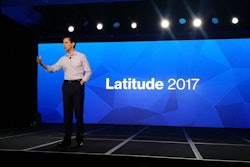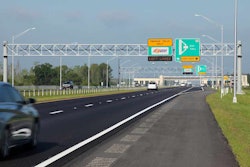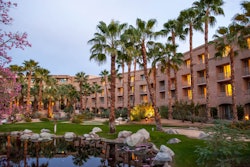Throughout the year and especially now during the busy Halloween season, 1,200 salespeople for The Hershey Company are visiting stores to secure prime floor space for merchandizing confectionery.
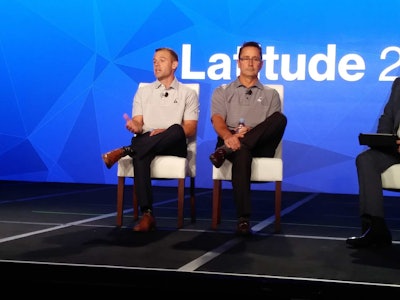 Craig Stevenson, left, and Thomas Smuda discuss Hershey’s implementation of Telogis Route on Oct. 24 at the Latitude conference.
Craig Stevenson, left, and Thomas Smuda discuss Hershey’s implementation of Telogis Route on Oct. 24 at the Latitude conference.Hershey is one of last remaining snack food manufacturers that has a direct sales force; most others use third-parties for merchandizing.
“We bring our brands to life with our own people with Hershey in their hearts,” said Thomas Smuda, the company’s vice president of North American retail.
The company has traditionally let its salespeople decide what stores to visit and in what order. On Oct. 24, Smuda peeled the wrapper off a new technology the company uses to optimize the routes for its sales force.
This year its sales reps were able to visit the right stores at the right time leading up to Halloween by following optimized route plans.
Smuda joined Craig Stevenson, Hershey’s manager of retail development, on stage at the annual Latitude business conference for Telogis customers. Telogis, a Verizon Company, has a suite of cloud-based applications fleets use to connect, optimize, and automate their local and long-distance fleet operations.
Among the metrics Hershey uses to inform its routing decisions are confection sales per store per year, and the potential for incremental sales from store visits. In the past, the company relied entirely on feedback from its sales associates to obtain this information. Salespeople would manually enter their reconnaissance into a customer relationship management (CRM) application from Salesforce.com using tablets.
With the Telogis Route application, Hershey is able to better analyze the store metrics, plan routes, and then compare the plan with actual performance to increase the gap with competitors, Stevenson said.
Hershey is able to optimize the routing of sales reps based on the prioritized store locations using the aforementioned key metrics.
Currently, Hershey uses the Telogis Route application at four of its 47 districts with plans to complete a nationwide rollout in first quarter of 2018. So far, results have shown an increase in sales force productivity.
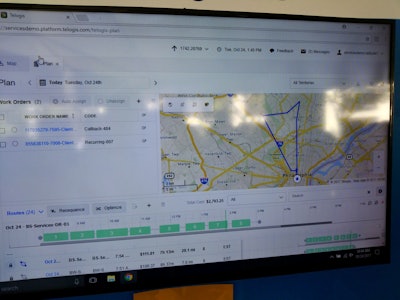 The Hershey Company uses Telogis Route to optimize its daily sales routes.
The Hershey Company uses Telogis Route to optimize its daily sales routes.“Our days have gotten so efficient that it has allowed us to move resources around. Before, the routes were stagnant and never changed,” Smuda said. “Instead of going to what they think is the right store, we are now able to measure the return on investment (ROI) for their visits and track each hour they worked.”
The flexibility to adjust and re-optimize routes on the fly is especially useful at times when retailers, like Kroger, run a flash sale on confections.
“We have to be able to respond to that very quickly,” Smuda said. By using the Route technology, managers can identify which Kroger stores their sales reps need to visit the next day and send them route plans within 24 hours.
The insights from Route and from Salesforce.com have made it easy to identify hiring needs for additional sales reps and to respond to questions from upper management, such as “how much time are sales reps spending in Walmart stores?” Or “how many store calls are the reps making in an individual day?” he said.
The software is helping improve the work-life balance of employees too. Hershey sales reps no longer have to plan their routes at the end of the day since the routes are sent to them automatically. All of this creates more time for them to spend in stores “bringing our brand to life,” Smuda said.




